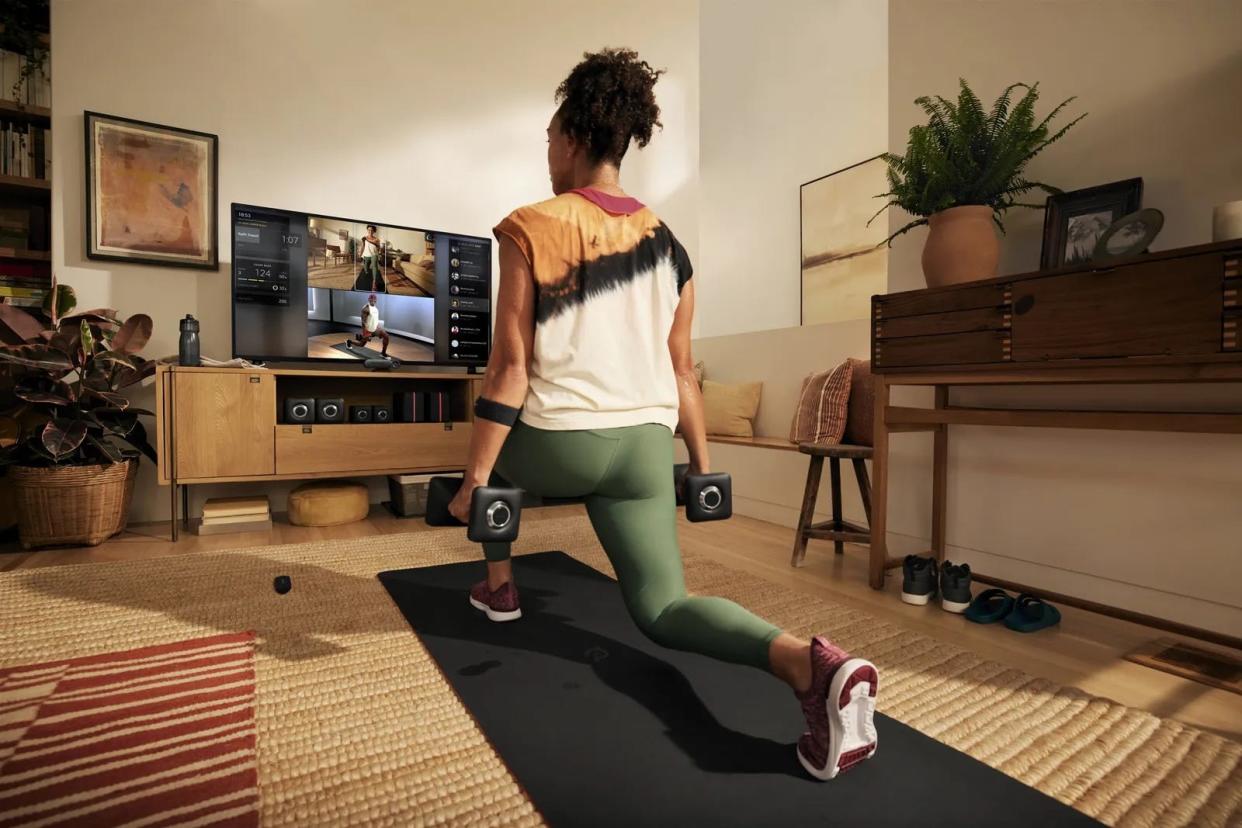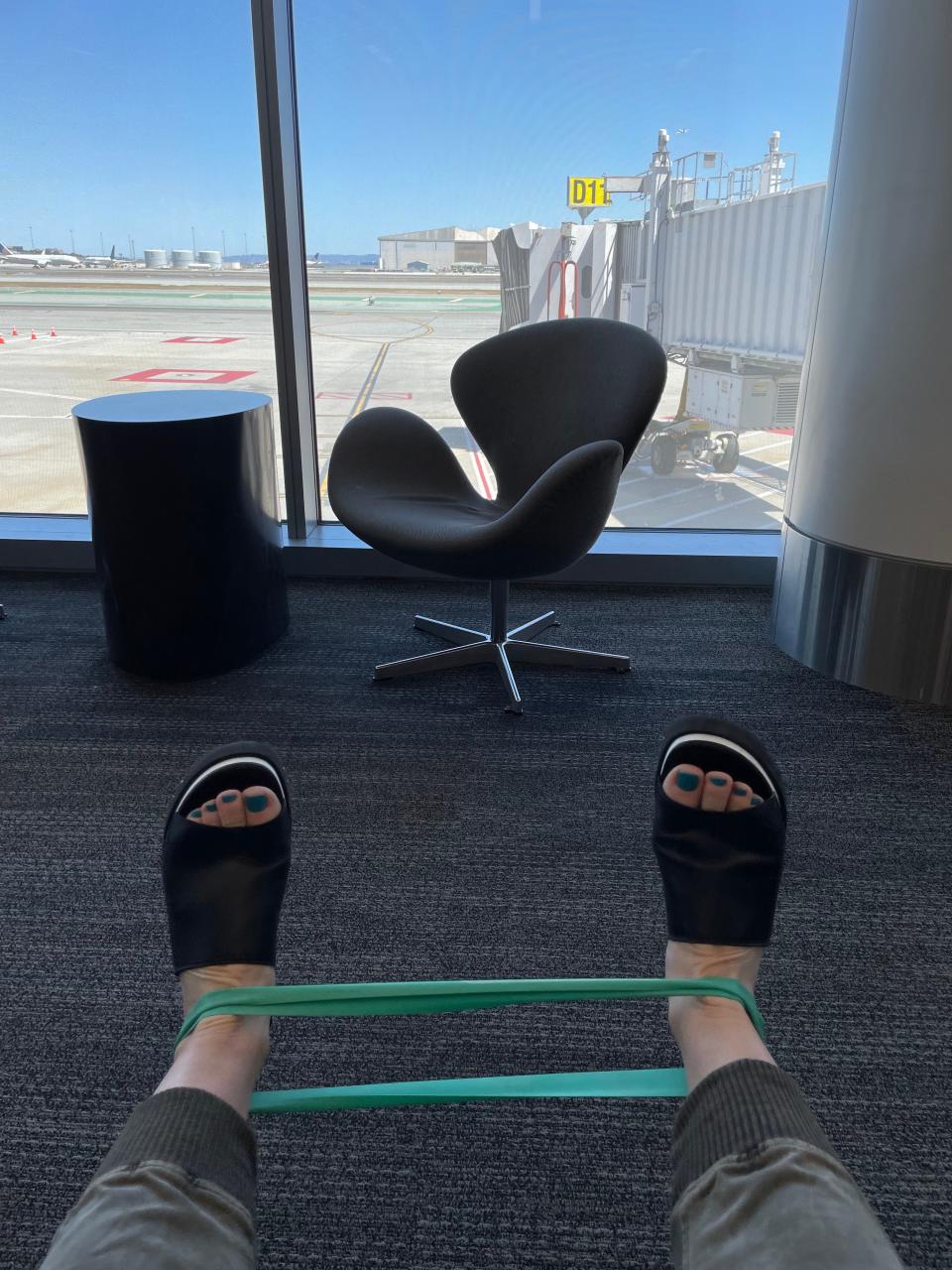These fitness apps put a tiny personal trainer in your pocket – that holds you accountable

Good news for anyone who wants to get in better shape: If you have a smartphone and can download apps, you already have a tiny personal trainer in your pocket, ready to motivate, inspire and help you work through any rough patches along the way.
So why aren’t more people working out? According to the CDC, 1 out of every 2 adults and nearly 80% of high schoolers in America still don’t get enough exercise. That packs on $117 billion annually in additional healthcare cost, too.
Before lamenting the start of another swimsuit season, here are some of the most common reasons people don’t exercise, alongside a new, high-tech fix that I’ve tried out firsthand.
I can’t afford it
For those with the cash to spare, there's no shortage of personal trainers and high-end home fitness equipment. Take for instance, the wall-mounted, dynamic weight machine Tonal, which will run you around $3,000 up front, plus a $50 monthly membership fee. Gulp.
The equipment is incredible and exactly what you expect superstar athletes (and Tonal endorsers) like LeBron James and Serena Williams to have in their home gyms. But what about the rest of us saving up our pennies to (hopefully) get kids through college and maybe even retire someday?
TALKING TECH NEWSLETTER: Sign up for our guide to the week's biggest tech news
Apps like FitOn are free and easy to use and have a wide range of exercises from barre and yoga to kickboxing, strength training and even dance exercises that you can do anytime, anywhere. Even with all the trail-running that I do on my own, I use it at least twice a week for Pilates, core exercises or a quick hit of meditation and stretching to help me sleep.
YouTube is another free way to track down the “just right” exercise routine for any specific needs – if you don’t get sidetracked by the latest video of the world’s largest Oreo, that is.
My friend Britt recommends the “Walk off Weight” for Women over 50 series. At the same time, my 75-year-old ultramarathon coach “Mama Lisa” Felder swears by several different strength training and foam-rolling videos that seem to work wonders on my myriad middle-age weekend warrior running issues.
KEEP THOSE NAKED PHOTOS PRIVATE: How to safeguard sensitive photos from hackers
Most top exercise apps and even expensive equipment have two weeks to three months “free” trial periods. I talk about this quite a bit in past columns and videos and some people even go entire years on trial runs of apps and gadgets. I don’t recommend that, but also? Don’t let that cost excuse keep you couch-locked another minute.
The biggest con here is that It’s easy to cheat or quit if no one’s watching. It’s also hard to do each exercise using the proper form without a coach, which could lead to a lack of results or injuries.
NO MORE PASSWORDS? We're moving closer to portable digital identities
I don’t know what I’m doing and need help
If you’re unsure what to do or how to do it to get the results you want, look no further than the newly released HipTrain app (iOS, PC or Smart TV). It lets you exercise one-on-one, with a certified personal trainer, for $7 for 30-minutes or $14 for one hour. That’s around $50-$100 less than the individual training sessions I’m used to.
HipTrain’s trainers are bilingual (English & Spanish) and have diverse disciplines in mobility, strength training, CrossFit, combat training, Pilates, yoga and more.
Answer a quick onboarding questionnaire to check out your workout goals and fitness background and the company matches you with a personal trainer within 24 hours. It doesn’t matter what equipment you have; the instructors can figure out how to make it work for you. That’s their job and they do it well.

For the past two weeks, I’ve been working out with 29-year-old Mayra “May” Acosta Martinez, an absolute spark plug who gets the balance of motivation and inspiration just right.
She video conferences with me through the app from her home studio in Buenos Aires, Argentina, and puts me through a full hour of all the exercises I know I "need" to do but don’t do on my own. (I don’t particularly appreciate doing anything that hurts, which is every form of strength training for me.) Each session is just the right amount of hard. I sweat to the point of embarrassment and we laugh together like crazy people when I flop around like a dying fish at the end of the hour.
To be clear, it’s all fake drama on my part, which May understands about me all too well already and I love working out with her.

The biggest con has been my incredibly erratic schedule, which HipTrain seems to take in stride. I rarely know where I will be or what time zone I’ll be in week-to-week, but May and the company go out of their way to work it all out.
When I asked a company spokesperson how they can do these one-on-one sessions so inexpensively, he explained that many trainers do it as a side-hustle and might be working on language skills or toward higher fitness degrees simultaneously. I hope that doesn’t mean high trainer turnover or an increase in cost because so far, minus a few early tech glitches, especially with my digital calendars, it’s pretty perfect as is.
I don’t have time to work out
OK, it’s time to kick this excuse to the curb once and for all. According to a recent report, even the busiest among us can squeeze in at least 10 minutes or so a day, which has lifesaving benefits for people over 40. Whether waking up a few minutes earlier or breaking exercise time down into five-minute increments a few times a day, there’s always a way to get it done.
The CDC says that just 30 minutes of moderate-intensity aerobic activity five days a week, plus two days a week of muscle-strengthening exercise, is enough to vastly improve physical and psychological health. If you’ve ever exercised regularly, there’s a good chance you get that.

Think about adding exercise into something you already do. I travel with a $12 TheraBand that I can put around my legs for squats, ankles for kickbacks and use with my arms for a full-body workout on the go. I’m writing this story from the passenger seat of a van on a work-related road trip. That TheraBand is around my ankles and I’m doing single leg raises as I type. I’ve also recently added lunges while pushing a baby stroller or kickbacks while mowing the lawn. There are a lot of new, really fun, active VR and video games, like Oculus’ Beat Saber or playing tennis via Nintendo Switch Sports.
Peloton also has a new gadget that’s pretty darn handy for a quickie workout. It’s a body-tracking video camera called Guide ($295, $24/month subscription fee through the end of 2022) that uses computer vision to give feedback about your exercise routine, all while fitting into your crazy busy, squeeze-in-a-workout day.
Out of the box, it’s incredibly intuitive and easy to attach the small add-on camera to a TV, sign in to your Peloton account and choose from thousands of strength training classes, live or on-demand. Of everything here, it’s the easiest start-to-sweat to figure out and set up.
While you’re making each move, you’ll see yourself in a smaller window next to the instructor. A little graphic symbol the company calls its Movement Tracker fills in to tell you whether you’re doing the exercise correctly and finishing all of the reps in the allotted time. At the end of each workout, Guide shows you the parts of the body you exercised and, over time, can give important insights into what you might be leaving out – for me, it’s the arms and back – even when choosing a “full-body” class.

I often use the Peloton bike first, then jump over to Guide for a 20-minute full-body strength training session, quick abdominal workout or for the kinds of stretches that make it possible to test a ton of fitness gear at my age with my crazy schedule.
Out of all the apps I’ve tried, which are in the thousands by now, Peloton seems to understand best how busy, ordinary people do the best they can with whatever time they have. This is Peloton’s superpower, alongside its superstar instructors and Apple-like eye-candy software. This is a well-thought-out product that I can’t wait to use more.
The biggest con is that you can’t use Guide with a tablet or smartphone; it has to be connected to a Smart TV. If you’re really into it, you could travel with it since most hotels have connected TVs these days, but that feels like a stretch.
Peloton just announced it’s launching a new connected rowing machine, so hopefully, we see more affordable, problem-solving type health and fitness solutions come from them over the next year.
There are more reasons and much, much more new gear. I’m working on gadgets that can help you get more activity, even while at work, like walking desks and cycle chairs. Let me know if you have any questions or specific gadgets or tech tools you want me to check out.
Jennifer Jolly is an Emmy Award-winning consumer tech columnist. Email her at jj@techish.com. Follow her on Twitter: @JenniferJolly. The views and opinions expressed in this column are the author’s and do not necessarily reflect those of USA TODAY.
This article originally appeared on USA TODAY: These fitness apps let you know whether you're doing an exercise right

 Yahoo Movies
Yahoo Movies 
